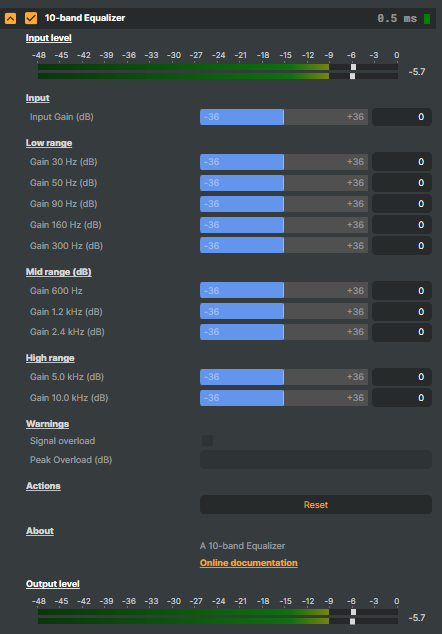An audio equalizer (EQ) is a tool used to adjust the balance of different frequency components in an audio signal. It allows you to boost or cut specific frequency ranges, shaping the overall sound.
The 10-band Equalizer is a fixed-frequency EQ.
The width (Q) of each band is static, and the frequency bands range from 30kHz to 10kHz. The input gain and the gain for each band can be adjusted from -36 dB to +36 dB. If the signal is overloaded (>100% dBFS), the warnings section will indicate the peak output value in decibels (dB).

This operator displays the audio input level before processing and the output level after the operator has been applied, allowing you to monitor how the adjustments affect the signal.
A miniature audio meter (VU meter) in the header indicates incoming audio, so you can quickly verify that the operator is receiving audio even when it is collapsed.
Warnings
- Signal Overload – If the peak level exceeds 0 dBFS, the signal overload indicator will be active for two seconds.
- Peak Overload (dB) – Shows the last measured peak value in dBFS.
Use Settings to adjust how long the signal overload indicator stays active, and Project Options to change the maximum peak level displayed in all audio meters to your preference.
For more information on audio, see Working with audio in scenes.
(The operator is available in R1 2025 and later releases)